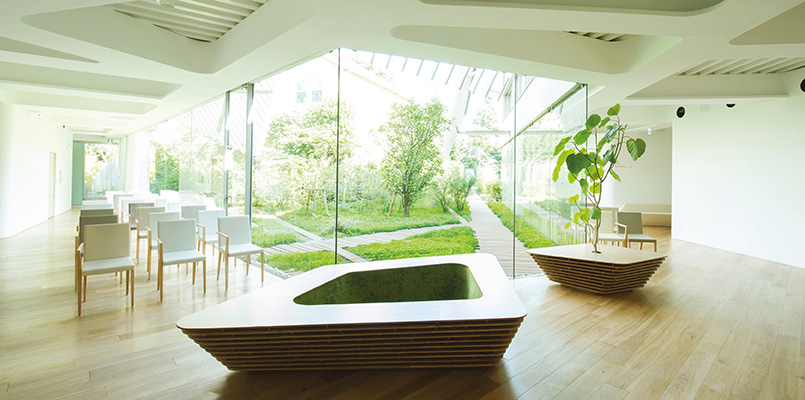Designing for Health
September 26, 2019
How can we design healthcare facilities to enable the shift in thinking that healthcare is more than preventive care and pathogenesis? Can a hospital be designed to support health rather than just treating illnesses?

The healthcare industry is constantly evolving, as patient needs shift, and new medication and technology change methods of treatment. The challenge of healthcare design is to keep pace with this evolution, anticipating the programmatic demands of 10 or 20 years later. Today, however, the healthcare landscape is shifting so rapidly that this may no longer be sufficient. We need to rethink our model of healthcare design; to question what the fundamental purpose of hospitals, clinics and so on is—and what it should become.
Healthcare is one of the fastest-growing industries globally, as a rising middle class and aging populations drive up demand1. Once dominated by infectious diseases, accidents and acute illnesses, most medical treatments today address chronic conditions and long-term care such as diabetes, cancer, heart disease and mental health2. The rise of sector-disrupting technology such as digital platforms has made diagnosis and treatment more affordable and accessible, but has also raised concerns as patients and doctors navigate new models of care. Alongside these changes is a cultural shift, a growing awareness of health and wellness encompassing both mental and physical well-being.
As these changes create new user needs and expectations, patients’ relationships with physical healthcare facilities is changing, and the role of hospitals, clinics and so on in the community is in question. Hospitals were originally built to treat the sick; yet if most cases are preventable diseases, care must be preventative rather than responsive; and if mental well-being is a key element of physical health, our reliance on physical treatment is inefficient, using only half the tools at our disposal. Having realised this, how can we design healthcare facilities to enable this shift in thinking? Can a hospital be designed to support health rather than just treating illnesses?
Salutogenesis is the study of health, and in particular, the psychological anchors that promote health and well-being.
These questions are not new. Decades of discourse on the role of design in health covers everything from the humanisation of hospitals to environmental psychology and the concept of salutogenesis. Salutogenesis is perhaps the most radical approach—it is an alternative medical approach that focuses on studying and promoting the causes of health, as opposed to a conventional medical approach, or pathogenesis, which focuses on studying and fighting illnesses.
THE RISE OF PREVENTATIVE CARE
Small changes can have a large impact, and public institutions have the ability to engage people and influence their daily habits and routine. Design may not be able to heal outright, but it can help us to build the mental and physical resilience behind a healthy life—if we are bold enough to design for it.
CASE STUDY: MAGGIE’S CENTRES
References
1Business Times. (2019, April 10). The changing world of healthcare. Retrieved June 19, 2019, from The Business Times: https://www.businesstimes.com.sg/hub/whos-who-in-healthcare-2019/the-changing-world-of-healthcare
2World Health Organisation. (n.d.). The global burden of chronic disease. Retrieved June 19, 2019, from World Health Organisation: https://www.who.int/nutrition/topics/2_background/en/
To read the complete article, get your hardcopy at our online shop/newsstands/major bookstores; subscribe to FuturArc or download the FuturArc App to read the issues.
Previously Published Main Feature
Contact us at https://www.futurarc.com/contact-us for older commentaries.

